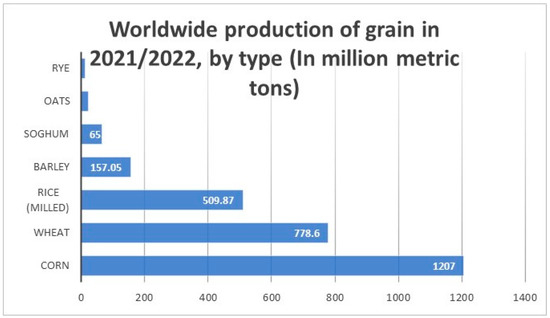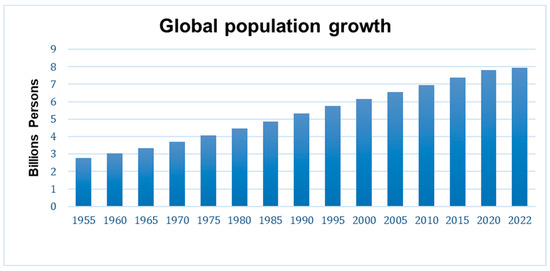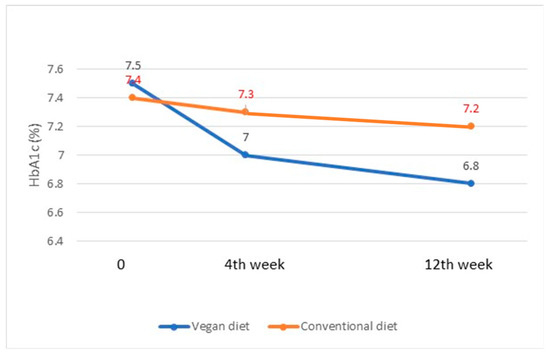You're using an outdated browser. Please upgrade to a modern browser for the best experience.
Please note this is a comparison between Version 2 by Wendy Huang and Version 1 by Weiqun Wang.
The production of rice, an important cereal crop and staple food for most of the world’s population, faces challenges due to climate change, the increasing global population, and the simultaneous prevalence of hunger and obesity worldwide. These issues could be addressed at least in part by genetically modified rice. Genetically modified rice has been approved by the ISAAA’s GM approval database as safe for human consumption. The aim behind the development of this rice is to improve the crop yield, nutritional value, and food safety of rice grains.
- genetically modified rice
- bioactive components
- antioxidant activity
- diabetes
- anti-inflammatory activity
1. Introduction
Oryza sativa, more commonly known as rice, is an important cereal crop and essential food for most of the world’s population, especially in Asian countries [1,2][1][2]. As shown in Figure 1, rice is the third top grain worldwide in terms of production in 2021/22. The relationship between humans and rice is incredibly old, and it is believed to have been cultivated in China as early as 10,000 years ago [3]. Although wild rice is often found in wetlands, there are two types of rice cultivation: dry-land rice and paddy rice. Compared to dry-land crops, paddy-cultivated rice has the advantages of less weeding, less soil runoff, and the ability to be grown in successive crops [3]. In addition, it would have a water storage effect as a source of groundwater. Rice, with its historical relationship to people, has significant potential for addressing numerous forthcoming challenges.
While the world population has been growing continually since 1955 (Figure 2), developing and developed countries are facing different types of “malnutrition”. In developing countries, up to 828 million people are experiencing food insecurity and 49 million people are enduring a hunger crisis [4]. As a result, malnutrition kills 25,000 people each day [4,5][4][5]. Developed countries also face malnutrition issues, particularly diet-related non-communicable diseases such as heart disease, cancer, stroke, diabetes, and obesity [5]. Meanwhile, the world’s climate is rapidly changing. Climate change brings unstable weather, natural disasters, and a disruption to natural resources, all significantly impacting agricultural production. Extremely high temperatures cause depletion of water resources and reduce natural resources, such as habitat and food for beneficial insects (e.g., honeybees) [6]. As a result, crop flowering and pollination are inhibited, and weed and pest infestations increase. Droughts cause poor harvests and loss of agricultural land. Heavy rains cause flooding, which removes topsoil and damages crops [6]. One study estimates that climate change will make crop production (corn, rice, wheat, and soybeans) more precarious, with production declining by 8% by the 2050s in Africa and South Asia [7].
Introduced in 1996, genetically modified (GM) crops have been touted to increase food production by increasing yield per unit area (unit yield) without the destruction of nature by clearing or expanding farmland when compared to non-GM crops [8]. Rice has been genetically modified to produce a larger, more nutrient-dense product while increasing herbicide and pesticide resistance, accelerating photosynthesis, and producing essential proteins. The year 2000 marked the approval by the United States of the first two herbicide-resistant GM rice varieties called LLRice60 and LLRice62 [9]. Subsequently, GM rice varieties resistant to herbicides, including these and others, received official approval in Canada, Australia, Mexico, and Colombia. Nevertheless, the granting of these approvals did not lead to their commercialization [10]. In 2009, it was reported that China had authorized the biosafety of GM rice engineered to resist pests; however, that particular strain was not brought into commercial production [11]. Both Canada and the United States granted approval for the cultivation of genetically modified golden rice in 2018. Health Canada and the US Food and Drug Administration affirmed its safety for consumption [12]. According to the Qingdao Saline-Alkali Tolerant Rice Research and Development Center, as of 2021, China had successfully cultivated salt-tolerant “seawater” rice on approximately 990,000 acres of land with salt levels of up to 4 g per kilogram [13]. As mentioned previously, while GM rice has been developed and accepted in some countries, it has not yet been accepted and commercialized in many others. One possible cause is that GM rice is new, different, and unknown, and people’s uneasiness about side effects may be an obstacle. Political issues are another concern for the commercialization of GM rice. Thus, the prospects for GM rice are expected to flourish, unless it is met by some issues. As GM rice varieties continue to be improved, it is now being grown in the fields of many countries.
The application of new genome-editing breeding technologies has significantly expanded the possibilities for crop improvement in rice. In recent years, various genome-editing techniques, including CRISPR-directed evolution, CRISPR-Cas9, and base editors, have emerged as powerful tools for efficient and precise genome modifications in rice. The suitability of rice as a model system for functional studies, its small genome size, and close syntenic relationships with other cereal crops have further accelerated the development and implementation of novel genome-editing technologies in rice [14]. Researchers continue to innovate and refine these technologies specifically tailored for rice, allowing for targeted genetic modifications to improve desired traits [15]. By harnessing the power of these emerging technologies, researchers can unlock the full potential of rice as a vital crop, contributing to global food security and sustainable agriculture.

Figure 1.
Grain production in 2021/2022 adapted and modified from

Figure 2.
Global population growth since 1955 adapted and modified from
2. Bioactive Compounds
Rice is rich in nutrients such as carbohydrates, fiber, protein, vitamins, and minerals [65][18] (Table 1). In addition to nutritional components, rice contains bioactive components known as phytochemicals, such as phenolic compounds (e.g., campesterol and caffeic acid), flavonoids (anthocyanin and proanthocyanin), γ-oryzanol, carotenoids (e.g., α-carotene, β-carotene, lycopene, and lutein), phytosterols (e.g., β-sitosterol, stigmasterol, and campesterol), vitamin E isoforms (α-, γ-, δ-tocopherols and tocotrienols), gamma-aminobutyric acid (GABA), phytic acid, coumaric acid, and tricin [23,65][18][19]. These bioactive components have a variety of biological activities, the most significant of which are antioxidant, anticancer, anti-diabetic, and anti-inflammatory [23][19]. The potential health benefits are exhibited in humans as they consume rice as part of their routine daily diet [65][18]. One study conducted in China showed that when compared to wheat preference, rice preference was associated with a lower risk of excessive body fat in men and a lower risk of central obesity in women [66][20].
| Components | Amounts (per 100 g) | |
|---|---|---|
| Brown Rice | Milled Rice | |
| Carbohydrate (g) | 73–87 | 77–87 |
| Protein (g) | 7.1–8.3 | 6.3–7.1 |
| Fiber (g) | 2.9–4.4 | 0.7–2.7 |
| Fat (g) | 1.6–2.8 | 0.3–0.6 |
| Calcium (mg) | 10–50 | 10–30 |
| Phosphorus (mg) | 0.17–0.43 | 0.08–0.15 |
| Iron (mg) | 1.4–5.2 | 0.3–0.8 |
| Zinc (mg) | 1.9–2.8 | 0.8–2.3 |
| α-tocopherol (mg) | 0.8–2.5 | 0.1–0.3 |
| Phytic acid P (mg) | 0.13–2.7 | 0.02–0.07 |
| Thiamin (mg) | 0.4–0.6 | 0.07–0.17 |
| Riboflavin (mg) | 0.04–0.14 | 0.02–0.06 |
| Niacin (mg) | 3.5–6.2 | 1.3–2.5 |
| Pantothenic acid (mg) | 1.4–1.6 | 0.8–1.3 |
| Vitamin B6 (mg) | 0.5–0.7 | 0.1–0.4 |
| Folate (μg) | 16–20 | 4–9 |
3. Antioxidant Activity
Antioxidants protect against oxidative damage and help to reduce the risk of chronic diseases such as cancer, cardiovascular disease, and type 2 diabetes [58,68,69][22][23][24]. The vitamin E content found in rice can promote antioxidant activity. Pigmented rice varieties such as black, purple, red, and brown rice contain anthocyanins, the phytochemical responsible for the deep purple and red color in plants like berries and grapes that promote antioxidant activity. Antioxidants like anthocyanins have been associated with a protective factor against some cancers. A study showed a dose-dependent decrease in the size and number of aberrant crypt foci formed and β-catenin expression in rats fed a crude extract of germinated rice [70][25]. Gamma-aminobutyric acid (GABA) is another bioactive compound found in rice. The GABA contents of germinated brown rice were shown to have inhibitory effects on the reproduction of some cancer cells as well as increased stimulation of immune response [20,65][18][26]. GABA is known to improve hypertension, memory impairment, hypo-motivation, and sleep disturbance by suppressing noradrenaline secretion in the periphery, inhibiting excitation of the whole brain through afferent neurotransmission, stimulating cerebral blood flow, increasing oxygen supply, and enhancing the metabolic function of brain cells [71][27]. In a mouse model of type 2 diabetes induced by a high-calorie diet, elevated total and LDL cholesterol levels and decreased adiponectin levels were observed in the blood. To clarify the active ingredient, GABA, which is abundant in the germ extract, was orally administered, and a significant increase in blood adiponectin level was observed with GABA. As mentioned above, inhibitory nerves are likely involved in the GABA mechanism of action. Since the blood adiponectin level generally decreases in humans and mice under stress, the administration of GABA may alleviate stress, resulting in an increase in blood adiponectin level [71][27].4. Anti-Diabetic Activity
Metabolic improvements associated with germinated brown rice can be helpful in the management of type 2 diabetes. These improvements include better glycemic control, reduced type 1 tissue plasminogen, amelioration of oxidative stress, correction of dyslipidemia, and increased activity of sodium–potassium adenosine triphosphatase and homocysteine thioacetone [72][28]. Using an open-labeled, randomized, cross-over study design, researchers observed that there was a significant decrease in postprandial plasma glucose, hemoglobin A1c (HbA1c), and lactalbumin levels in patients who ate brown rice two times a day when compared with those who ate white rice. (Figure 3) These effects are due to the rich bioactive content such as dietary fiber found in brown rice [73][29].
Figure 3.
Furthermore, one study reported that a diet composed of GABA-rich germinated brown rice and white rice did not produce significant changes in most metabolic indices in healthy individuals. Using 67 healthy volunteers (71 ± 8 aged), the effects of white rice and germinated brown rice + white rice (1:1, w/w) were determined following consumption for 11–13 months. There was only a significant decrease in HbA1c in the germinated brown rice + white rice group, but no differences were noted in body mass index, blood pressure, serum lipids, and homeostasis model assessment of insulin resistance between the two groups [74][30]. Germination of brown rice is one of the ways to increase the bioactive concentration in order to enhance the functional effect. Although it is not yet clear which bioactive substances are responsible for the functional effects of sprouted brown rice, several bioactive substances may contribute to the observed effects: fiber in the GBR is known to lower blood glucose levels by regulating glucose absorption in the intestine [74][30]. The influence of GABA receptors in pancreatic islets contributes to decreased insulin secretion in type 2 diabetes, and GABA supplementation has been reported to increase insulin secretion. This may explain the reduction in blood glucose levels in diabetes caused by GABA [74][30].
Levels of HbA1c (mean ± SD) at baseline, 4th, and 12th weeks in individuals with type 2 diabetes following a brown rice-based vegan or conventional diet.
5. Anti-Inflammatory Activity
One study concluded that a brown rice diet may be useful to decrease inflammatory marker levels [75][31]. In that study, overweight or obese women who followed a diet including brown rice had lower diastolic blood pressure and levels of the inflammatory marker hs-CRP compared to those who followed a diet without brown rice [75][31]. Additionally, incorporating brown rice into the diet can be a beneficial strategy for achieving significant weight loss and reducing visceral obesity. A significant mechanism of immune pathogenesis is inflammation, which is our body’s response to tissue infection, injury, or stress. Some reports have shown that lipophilic phytochemicals, such as γ-oryzanol and vitamin E derivatives contained in pigmented rice germ and bran, may possess anti-inflammatory activity [61][32]. Another study reported that pigmented rice contains large amounts of medium polar or hydrophilic compounds, such as phenolic compounds, anthocyanins, proanthocyanins, and bioflavonoids, which show anti-inflammatory activity in both in vitro and in vivo models [76][33].References
- Nair, K.P. Chapter four—Utilizing crop wild relatives to combat global warming. In Advances in Agronomy; Sparks, D.L., Ed.; Academic Press: Cambridge, MA, USA, 2019; Volume 153, pp. 175–258.
- Hasan, K.; Tanaka, T.S.T.; Alam, M.; Ali, R.; Saha, C.K. Impact of Modern Rice Harvesting Practices over Traditional Ones. Rev. Agric. Sci. 2020, 8, 89–108.
- Krishna, K.R. Agroecosystems: Soils, Climate, Crops, Nutrient Dynamics and Productivity; CRC Press: Boca Raton, FL, USA, 2013; ISBN 978-1-4822-0342-4.
- Wijerathna-Yapa, A.; Pathirana, R. Sustainable Agro-Food Systems for Addressing Climate Change and Food Security. Agriculture 2022, 12, 1554.
- Belahsen, R. Nutrition Transition and Food Sustainability. Proc. Nutr. Soc. 2014, 73, 385–388.
- Skendžić, S.; Zovko, M.; Živković, I.P.; Lešić, V.; Lemić, D. The Impact of Climate Change on Agricultural Insect Pests. Insects 2021, 12, 440.
- Tong, S.; Berry, H.L.; Ebi, K.; Bambrick, H.; Hu, W.; Green, D.; Hanna, E.; Wang, Z.; Butler, C.D. Climate Change, Food, Water and Population Health in China. Bull. World Health Organ. 2016, 94, 759–765.
- Klümper, W.; Qaim, M. A Meta-Analysis of the Impacts of Genetically Modified Crops. PLoS ONE 2014, 9, e111629.
- GM Approval Database|ISAAA.Org. Available online: https://www.isaaa.org/gmapprovaldatabase/ (accessed on 21 June 2023).
- Fraiture, M.-A.; Roosens, N.H.C.; Taverniers, I.; de Loose, M.; Deforce, D.; Herman, P. Biotech Rice: Current Developments and Future Detection Challenges in Food and Feed Chain. Trends Food Sci. Technol. 2016, 52, 66–79.
- Chen, M.; Shelton, A.; Ye, G. Insect-Resistant Genetically Modified Rice in China: From Research to Commercialization. Annu. Rev. Entomol. 2011, 56, 81–101.
- Kumar, K.; Gambhir, G.; Dass, A.; Tripathi, A.K.; Singh, A.; Jha, A.K.; Yadava, P.; Choudhary, M.; Rakshit, S. Genetically Modified Crops: Current Status and Future Prospects. Planta 2020, 251, 91.
- Liu, C.; Mao, B.; Yuan, D.; Chu, C.; Duan, M. Salt Tolerance in Rice: Physiological Responses and Molecular Mechanisms. Crop. J. 2022, 10, 13–25.
- Endo, M.; Toki, S. Genome Editing in Rice. Rice 2020, 13, 27.
- Zafar, K.; Sedeek, K.E.M.; Rao, G.S.; Khan, M.Z.; Amin, I.; Kamel, R.; Mukhtar, Z.; Zafar, M.; Mansoor, S.; Mahfouz, M.M. Genome Editing Technologies for Rice Improvement: Progress, Prospects, and Safety Concerns. Front. Genome Ed. 2020, 2, 5.
- Gmr. Available online: http://igc.int/en/gmr_summary.aspx (accessed on 5 July 2023).
- World Population Dashboard. Available online: https://www.unfpa.org/data/world-population-dashboard (accessed on 9 April 2023).
- Verma, D.K.; Srivastav, P.P. Bioactive Compounds of Rice (Oryza sativa L.): Review on Paradigm and Its Potential Benefit in Human Health. Trends Food Sci. Technol. 2020, 97, 355–365.
- Chaudhari, P.R.; Tamrakar, N.; Singh, L.; Tandon, A.; Sharma, D. Rice Nutritional and Medicinal Properties: A Review Article. J. Pharmacogn. Phytochem. 2018, 7, 150–156.
- Xu, K.; Zhang, B.; Liu, Y.; Mi, B.; Wang, Y.; Shen, Y.; Shi, G.; Dang, S.; Liu, X.; Yan, H. Staple Food Preference and Obesity Phenotypes: The Regional Ethnic Cohort Study in Northwest China. Nutrients 2022, 14, 5243.
- Juliano, B.O. Rice: Role in diet. In Encyclopedia of Food and Health; Caballero, B., Finglas, P.M., Toldrá, F., Eds.; Academic Press: Oxford, UK, 2016; pp. 641–645. ISBN 978-0-12-384953-3.
- Zhou, Y.; Cai, H.; Xiao, J.; Li, X.; Zhang, Q.; Lian, X. Over-Expression of Aspartate Aminotransferase Genes in Rice Resulted in Altered Nitrogen Metabolism and Increased Amino Acid Content in Seeds. Theor. Appl. Genet. 2009, 118, 1381–1390.
- Su, X.; Xu, J.; Rhodes, D.; Shen, Y.; Song, W.; Katz, B.; Tomich, J.; Wang, W. Identification and Quantification of Anthocyanins in Transgenic Purple Tomato. Food Chem. 2016, 202, 184–188.
- Ayella, A.K.; Trick, H.N.; Wang, W. Enhancing Lignan Biosynthesis by Over-Expressing Pinoresinol Lariciresinol Reductase in Transgenic Wheat. Mol. Nutr. Food Res. 2007, 51, 1518–1526.
- Ravichanthiran, K.; Ma, Z.F.; Zhang, H.; Cao, Y.; Wang, C.W.; Muhammad, S.; Aglago, E.K.; Zhang, Y.; Jin, Y.; Pan, B. Phytochemical Profile of Brown Rice and Its Nutrigenomic Implications. Antioxidants 2018, 7, 71.
- Shi, C.; Ren, Y.; Liu, L.; Wang, F.; Zhang, H.; Tian, P.; Pan, T.; Wang, Y.; Jing, R.; Liu, T.; et al. Ubiquitin Specific Protease 15 Has an Important Role in Regulating Grain Width and Size in Rice. Plant Physiol. 2019, 180, 381–391.
- Hosseini Dastgerdi, A.; Sharifi, M.; Soltani, N. GABA Administration Improves Liver Function and Insulin Resistance in Offspring of Type 2 Diabetic Rats. Sci. Rep. 2021, 11, 23155.
- Imam, M.U.; Azmi, N.H.; Bhanger, M.I.; Ismail, N.; Ismail, M. Antidiabetic Properties of Germinated Brown Rice: A Systematic Review. Evid.-Based Complement. Altern. Med. 2012, 2012, 816501.
- Kumar, A.; Agarwal, D.K.; Kumar, S.; Reddy, Y.M.; Chintagunta, A.D.; Saritha, K.V.; Pal, G.; Kumar, S.P.J. Nutraceuticals Derived from Seed Storage Proteins: Implications for Health Wellness. Biocatal. Agric. Biotechnol. 2019, 17, 710–719.
- Morita, H.; Uno, Y.; Umemoto, T.; Sugiyama, C.; Matsumoto, M.; Wada, Y.; Ishizuka, T. Effect of gamma-aminobutyric acid-rich germinated brown rice on indexes of life-style related diseases. Nihon Ronen Igakkai Zasshi Jpn. J. Geriatr. 2004, 41, 211–216.
- Kazemzadeh, M.; Safavi, S.M.; Nematollahi, S.; Nourieh, Z. Effect of Brown Rice Consumption on Inflammatory Marker and Cardiovascular Risk Factors among Overweight and Obese Non-Menopausal Female Adults. Int. J. Prev. Med. 2014, 5, 478–488.
- Kawakami, Y.; Bhullar, N.K. Molecular processes in iron and zinc homeostasis and their modulation for biofortification in rice. J. Integr. Plant Biol. 2018, 60, 1181–1198.
- Ronchetti, D.; Borghi, V.; Gaitan, G.; Herrero, J.F.; Impagnatiello, F. NCX 2057, a Novel NO-Releasing Derivative of Ferulic Acid, Suppresses Inflammatory and Nociceptive Responses in in Vitro and in Vivo Models. Br. J. Pharmacol. 2009, 158, 569–579.
More
